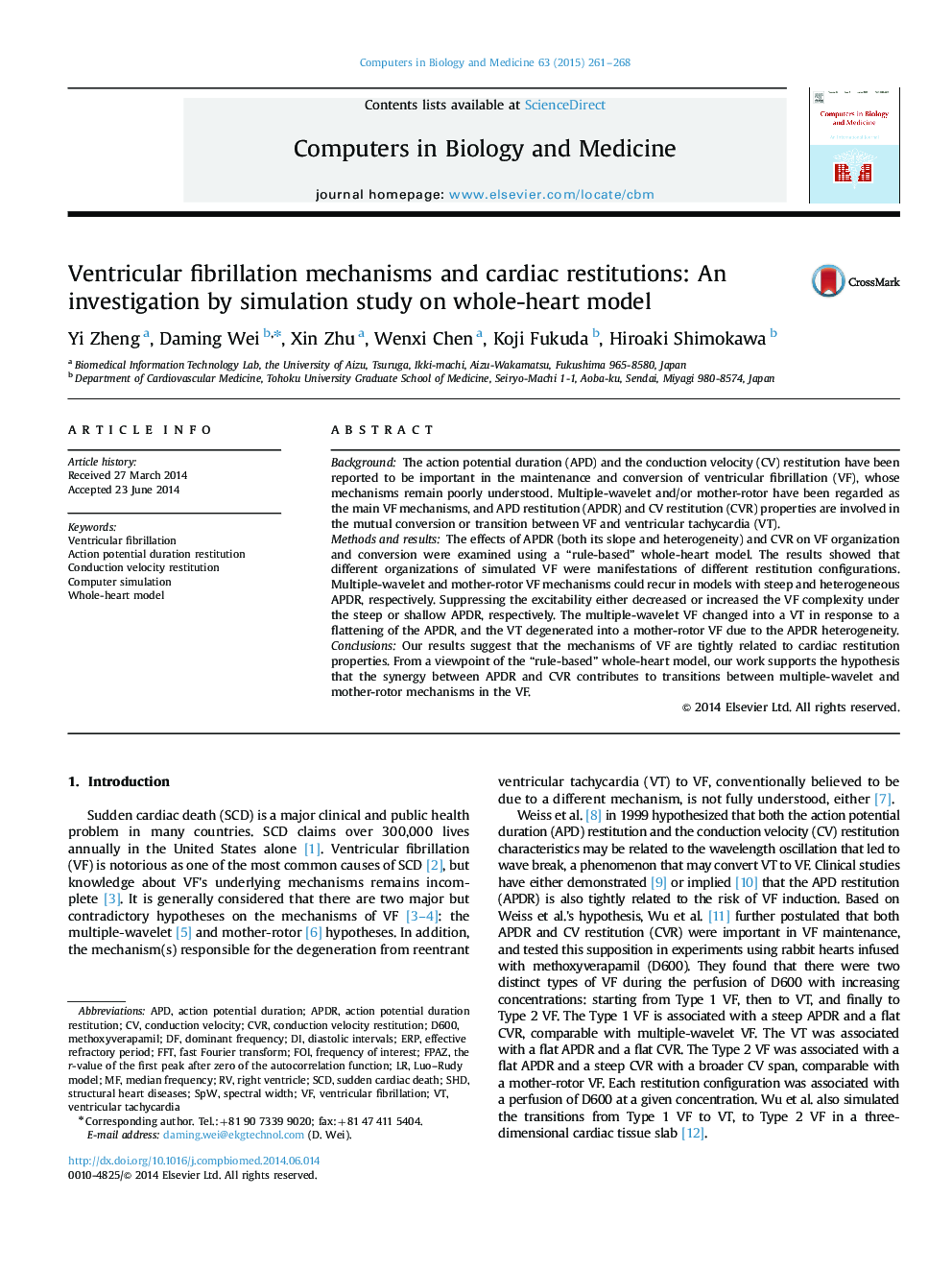| Article ID | Journal | Published Year | Pages | File Type |
|---|---|---|---|---|
| 505207 | Computers in Biology and Medicine | 2015 | 8 Pages |
•Effects of restitutions on ventricular fibrillation (VF) were examined insilico.•Action potential duration restitution (APDR) heterogeneity causes mother-rotor VF.•The effect of conduction velocity restitution on VF depends on the APDR•Conversion of two types of VF was successfully simulated.
BackgroundThe action potential duration (APD) and the conduction velocity (CV) restitution have been reported to be important in the maintenance and conversion of ventricular fibrillation (VF), whose mechanisms remain poorly understood. Multiple-wavelet and/or mother-rotor have been regarded as the main VF mechanisms, and APD restitution (APDR) and CV restitution (CVR) properties are involved in the mutual conversion or transition between VF and ventricular tachycardia (VT).Methods and resultsThe effects of APDR (both its slope and heterogeneity) and CVR on VF organization and conversion were examined using a “rule-based” whole-heart model. The results showed that different organizations of simulated VF were manifestations of different restitution configurations. Multiple-wavelet and mother-rotor VF mechanisms could recur in models with steep and heterogeneous APDR, respectively. Suppressing the excitability either decreased or increased the VF complexity under the steep or shallow APDR, respectively. The multiple-wavelet VF changed into a VT in response to a flattening of the APDR, and the VT degenerated into a mother-rotor VF due to the APDR heterogeneity.ConclusionsOur results suggest that the mechanisms of VF are tightly related to cardiac restitution properties. From a viewpoint of the “rule-based” whole-heart model, our work supports the hypothesis that the synergy between APDR and CVR contributes to transitions between multiple-wavelet and mother-rotor mechanisms in the VF.
